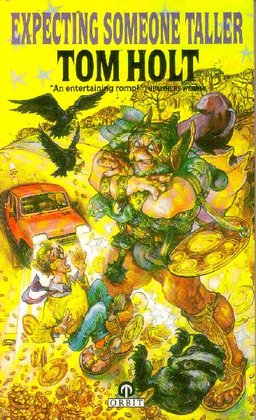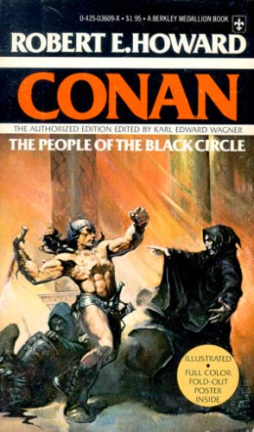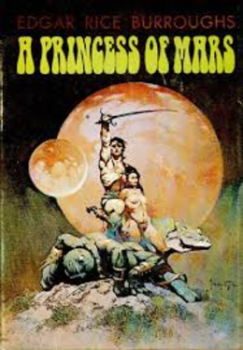“Aren’t You a Little Short for a Stormtrooper?” Or, How to Describe Characters
 As it happens, this line isn’t needed where it appears. We’re watching a movie and we can see for ourselves how tall Luke Skywalker is.
As it happens, this line isn’t needed where it appears. We’re watching a movie and we can see for ourselves how tall Luke Skywalker is.
But imagine that we’re reading the screenplay or a novel. That one line tells us quite a bit. That troopers are usually tall. That Luke isn’t.
For a really brilliant example of how this works in a novel, consider Tom Holt’s Expecting Someone Taller. Without even opening the book, readers immediately know something about the main character’s appearance: he’s shorter than anyone expects.
I thought I was finished with exposition in my last post – or as finished as a writer ever is when talking about the elements of writing. But then I realized that, in a way, description is a particular form of exposition, just as necessary, and just as likely – yes, I’ll say it – to be skipped, or at least skimmed, by readers if it’s too long.
And description, like other forms of exposition, carries its own peculiar difficulties. What I’d like to talk about this week is how characters, especially main characters, are described. You know, what they look like, not their personalities.
[Aside: Is a fictional character an object? In giving them human characteristics, are we indulging in personification?]
 Things must have been fairly easy back in the omniscient narrator days, where the narrator, who knew all and saw all, could simply take a reasonable opportunity to describe what the character looked like. Here’s an example from Robert E. Howard’s description of Conan in “The Devil in Iron”:
Things must have been fairly easy back in the omniscient narrator days, where the narrator, who knew all and saw all, could simply take a reasonable opportunity to describe what the character looked like. Here’s an example from Robert E. Howard’s description of Conan in “The Devil in Iron”:
The muscles of his heavy bronzed arms rippled as he pulled the oars with an almost feline ease of motion. A fierce vitality that was evident in each feature and motion set him apart from common men; yet his expression was neither savage nor somber, though the smoldering blue eyes hinted at ferocity easily wakened. This was Conan…
The fact that Howard doesn’t have to give us a lot of detail to conjure up a mental image, is testimony to his powers as a writer.
The omniscient narrator isn’t used much anymore, however, and in using third person limited, your options are, well, limited. If the writer wants the readers to know what the main character looks like, simply stating the desired details won’t work. The writer has to resort to some device or other, the most overused one being the mirror trick, where characters look at themselves in the mirror and catalogue their features for us.
It’s been said that if you’re going to use third person limited, you might as well use first person and be done with it. All the advantages of using third person disappear if you don’t use multiple points of view. So, do first person narrators find themselves in front of mirrors? Well, yeah, they do. Zelazny used a variation of this in Nine Princes in Amber by having Corwin describe the card that carried his own image, rather than using a standard mirror, but it amounts to much the same thing.
There are a couple of other methods that come in handy, and aren’t so overused. Rex Stout, in his Nero Wolfe Novels, has Archie Goodwin describe himself in terms of what other people look like. He’ll say something like “The client was a little taller than me, maybe six two.” Or, in how other people react to him, by saying things like “I had on my best suit, so I wasn’t surprised when she smiled at me.” John D. MacDonald does the same type of thing in his Travis Magee Novels, having Magee say things like, “No one expects someone as tall as I am to be so fast.”
Funny how height keeps coming up, isn’t it?
 Why am I using examples from mystery novels? Because there are more first person narrators in crime fiction than in any other genre. But that doesn’t mean there aren’t any in Fantasy and SF. To stick to the classics, Edgar Rice Burroughs has John Carter give a thorough and detailed description of everyone, except himself. It isn’t until Dejah Thoris arrives that dialogue is used to show him through someone else’s eyes:
Why am I using examples from mystery novels? Because there are more first person narrators in crime fiction than in any other genre. But that doesn’t mean there aren’t any in Fantasy and SF. To stick to the classics, Edgar Rice Burroughs has John Carter give a thorough and detailed description of everyone, except himself. It isn’t until Dejah Thoris arrives that dialogue is used to show him through someone else’s eyes:
What strange manner of man are you, that you consort with the green men, though your form is that of my race, while your colour is little darker than that of the white ape?
Which brings me to multiple points of view. I’m not saying that using multiple points of view evolved out of a need to find more naturalistic methods of describing the main character, but it’s not a bad hypothesis. How much more natural, more realistic, it is to have one character described by another. And how much easier for the writer! As I should know; here’s an example from my own The Sleeping God:
Parno knew what the townswoman saw – knew what he’d seen when he first noticed Dhulyn across a field of armored forms fighting and limp bodies fallen. A woman much taller than the average, hawk-faced, pale skin lightly damaged by the northern sun, beaded thongs tying back long hair the colour of old blood. The hair had been permanently removed over each ear, and the skin tattooed blue and green in her Mercenary badge.
So does multiple POV also make descriptions of other kinds easier? I’m saving that answer for next week.
Violette Malan is the author of the Dhulyn and Parno series of sword and sorcery adventures, as well as the Mirror Lands series of primary world fantasies. As VM Escalada, she writes the soon-to-be released Halls of Law series. Visit her website www.violettemalan.com
[…] Last week I talked about describing characters, and particularly the difficulties of describing point of view characters. But as writers we’re far more often required to describe places and spaces, both interior and exterior. For fantasy writers, this often means versions of places that exist (or existed) historically in our own world. If you’re the kind of person who, like my husband, can call to mind the descriptive details of things you’ve seen, this will mean a certain degree of ease in your life as a writer. […]